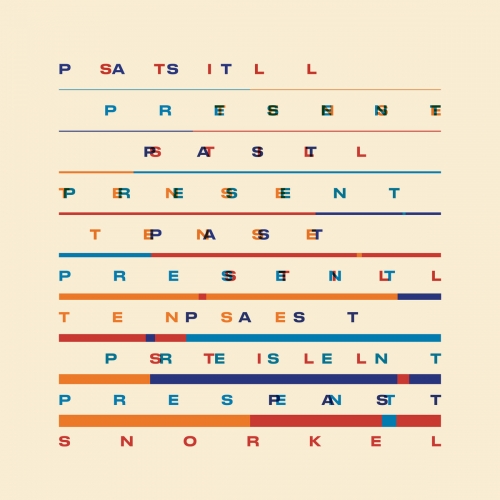Jacopo Salvatori - Debussy: Piano Works, Vol. 2 (2016) [Hi-Res]

Artist: Jacopo Salvatori
Title: Debussy: Piano Works, Vol. 2
Year Of Release: 2016
Label: OnClassical
Genre: Classical
Quality: FLAC (tracks) [88.2kHz/24bit]
Total Time: 58:37
Total Size: 898 / 157 MB
WebSite: Album Preview
Tracklist:Title: Debussy: Piano Works, Vol. 2
Year Of Release: 2016
Label: OnClassical
Genre: Classical
Quality: FLAC (tracks) [88.2kHz/24bit]
Total Time: 58:37
Total Size: 898 / 157 MB
WebSite: Album Preview
Claude Debussy (1862 - 1918)
Estampes, L. 100:
1 No. 1, Pagodes 04:43
2 No. 2, La soirée dans Grenade 05:01
3 No. 3, Jardins sous la pluie 03:39
4 Masques 06:33
5 Les soirs illuminés par l'ardeur du charbon 04:20
6 La plus que lente 02:19
Children's Corner, L. 113:
7 I. Doctor Gradus ad Parnassum 02:22
8 II. Jimbo's Lullaby 04:02
9 III. Serenade for a Doll 02:34
10 IV. The Snow is Dancing 03:31
11 V. The Little Shepherd 03:15
12 VI. Golliwogg's Cake-Walk 03:04
Pour le piano, L. 95:
13 I. Prélude 04:12
14 II. Sarabande 05:08
15 III. Toccata 03:41
Pour le piano (1901), Estampes (1903) and Masques (1904) belong to the period preceding that of the composer’s piano masterpieces, such as Images and Préludes, written between 1904 and 1913. Nevertheless they mark a fundamental stage in the composer’s development, in which he brings together his experience stemming from the early pieces with a more concise and strengthened sense of form. There is an inimitable quality to this music in the clarity of its moods, such as the Spanish atmosphere in La soirée dans Grenade or the asian sonorities in Pagodes, provided by its extensive use of pentatonic scales. His writing for piano equals that of the following masterpieces and was in itself innovative and pioneering.
Children’s corner (1907) is one of the most inspiring pieces by Debussy, written in 1907 and dedicated to his 3-years old daughter Claude-Emma: “To my beloved little Chouchou with the tender excuses of her father for what follows below”. Written in the form of a six-piece suite, the music explores the world of the young children through the eyes of an adult. Emma-Claude died in 1919 of diphteria, just one year after his father, at the age of 14; in light of that the work takes on a tragic aspect.
Les soirs illuminés par l’ardeur du charbon (1917) is Debussy’s very last piece. Never published by the author, it has been recently discovered and published by Durand. Though something of a sketch, it forms a finished piece which recalls the harmonies and the piano writing of the second book of Préludes, thought to be dedicated to his coal merchant. Its dark sonorities well depict its title, the view of an evening sky, seen from afar, glowing from burning coal. The title is taken from “Balcon”, a poem by Charles Baudelaire, which he had already set into music earlier in 1888.
La plus que lente (1910) is a short piece in the form of a waltz. The word Lente refers here to the valse lente, a widely-spread genre in France at that time. As with many of Debussy’s titles there may be a certain irony in it, but the piece is surely one of the best valses of its time, with its supple tempi and a peculiar melancholic character.
The young pianist Jacopo Salvatori continues his voyage into Debussy's music exploring vast sonorities at the modern piano (Steinway D-274).
Jacopo Salvatori, piano
Children’s corner (1907) is one of the most inspiring pieces by Debussy, written in 1907 and dedicated to his 3-years old daughter Claude-Emma: “To my beloved little Chouchou with the tender excuses of her father for what follows below”. Written in the form of a six-piece suite, the music explores the world of the young children through the eyes of an adult. Emma-Claude died in 1919 of diphteria, just one year after his father, at the age of 14; in light of that the work takes on a tragic aspect.
Les soirs illuminés par l’ardeur du charbon (1917) is Debussy’s very last piece. Never published by the author, it has been recently discovered and published by Durand. Though something of a sketch, it forms a finished piece which recalls the harmonies and the piano writing of the second book of Préludes, thought to be dedicated to his coal merchant. Its dark sonorities well depict its title, the view of an evening sky, seen from afar, glowing from burning coal. The title is taken from “Balcon”, a poem by Charles Baudelaire, which he had already set into music earlier in 1888.
La plus que lente (1910) is a short piece in the form of a waltz. The word Lente refers here to the valse lente, a widely-spread genre in France at that time. As with many of Debussy’s titles there may be a certain irony in it, but the piece is surely one of the best valses of its time, with its supple tempi and a peculiar melancholic character.
The young pianist Jacopo Salvatori continues his voyage into Debussy's music exploring vast sonorities at the modern piano (Steinway D-274).
Jacopo Salvatori, piano




![Yasuhiro Usui, Ryoko Ono and Taro Tatsumaki - The House Concert Live Collection, Vol. 55: Yasuhiro Usui (Live at 3rd Floor, Artist House, Daehak-ro, Seoul, 7/12/2015) (2025) [Hi-Res] Yasuhiro Usui, Ryoko Ono and Taro Tatsumaki - The House Concert Live Collection, Vol. 55: Yasuhiro Usui (Live at 3rd Floor, Artist House, Daehak-ro, Seoul, 7/12/2015) (2025) [Hi-Res]](https://www.dibpic.com/uploads/posts/2025-12/1765791289_rchn1y2nh7yfb_600.jpg)
![Tomasz Stańko - Unit (Polish Radio Sessions vol. 2/6) (2025) [Hi-Res] Tomasz Stańko - Unit (Polish Radio Sessions vol. 2/6) (2025) [Hi-Res]](https://www.dibpic.com/uploads/posts/2025-12/1765790300_cover.jpg)


